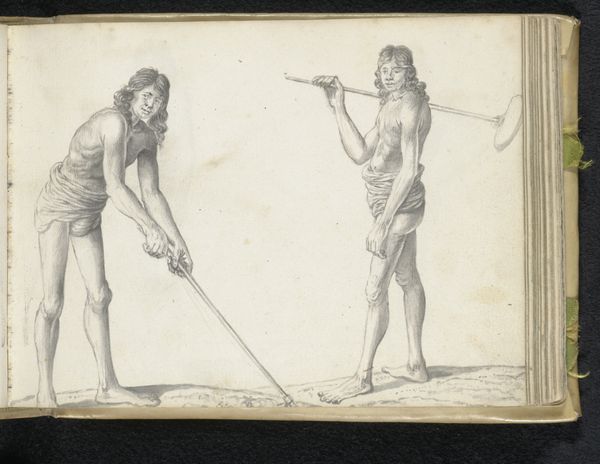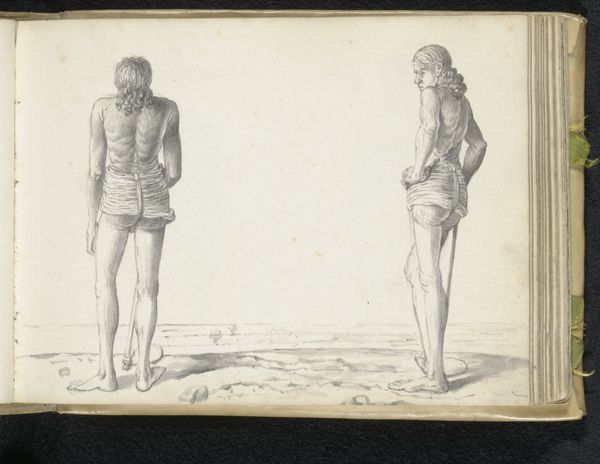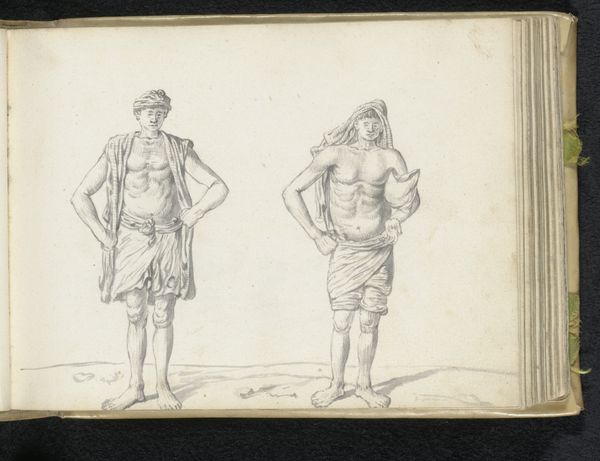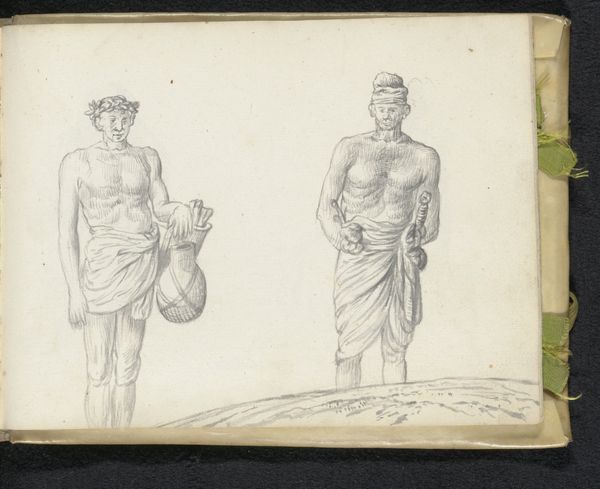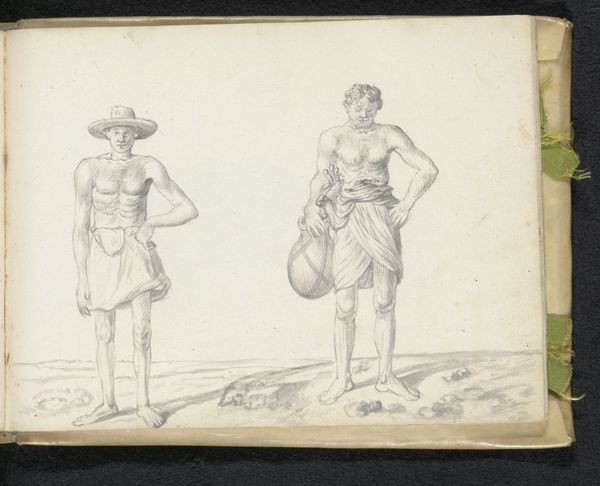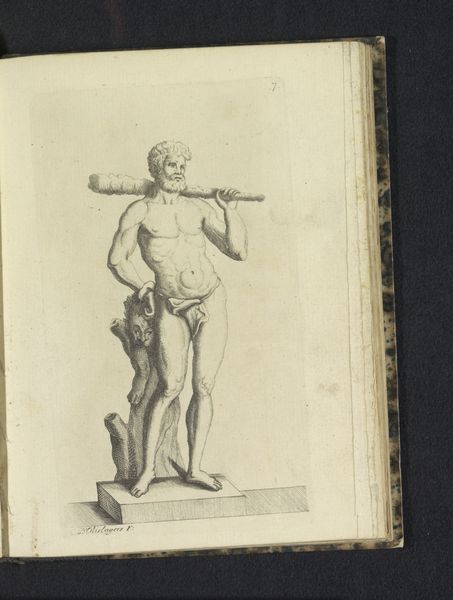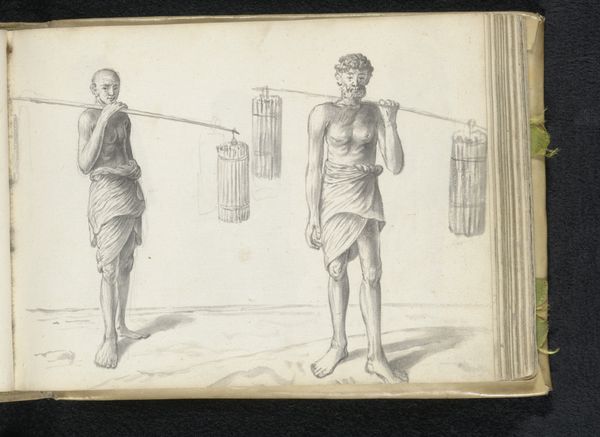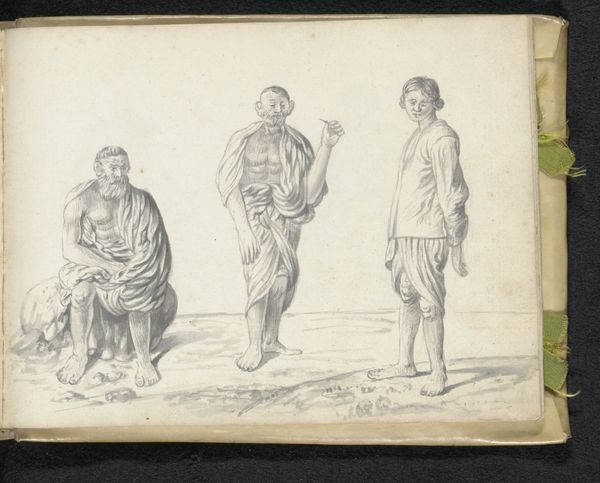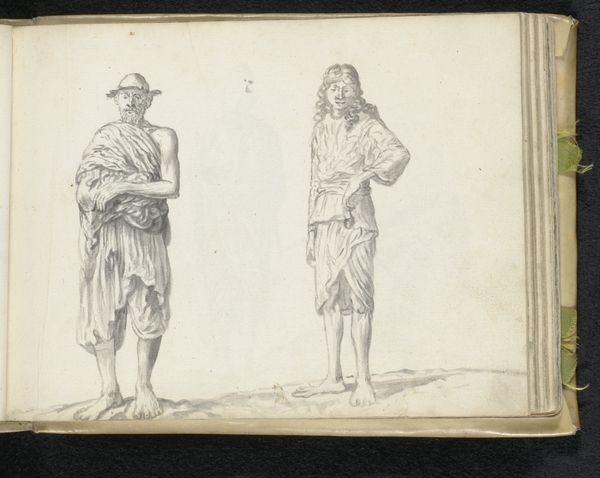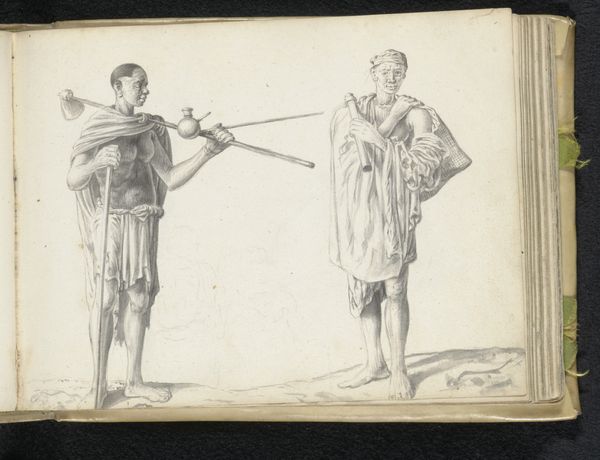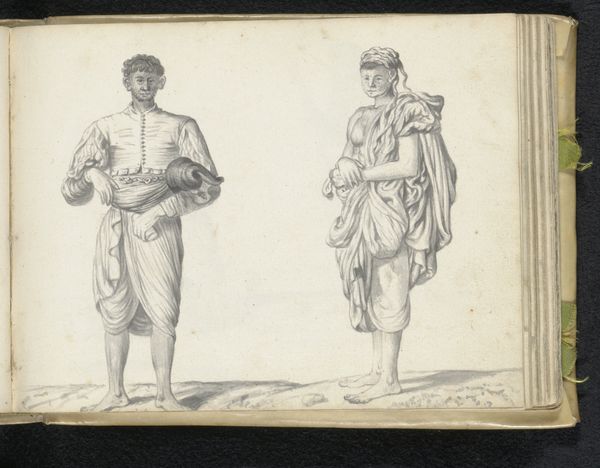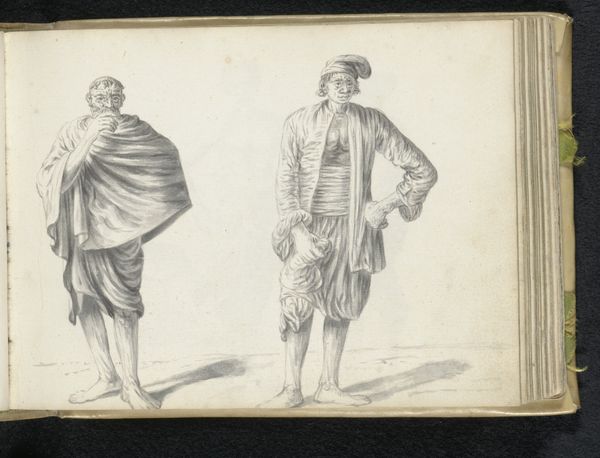
drawing, pencil
#
portrait
#
drawing
#
dutch-golden-age
#
figuration
#
coloured pencil
#
pencil
#
genre-painting
Dimensions: height 148 mm, width 196 mm
Copyright: Rijks Museum: Open Domain
Curator: Here we have "Two Sinhalese tillers", a drawing made around 1662 by Esaias Boursse. Editor: It's captivating. The sketch-like quality creates a real sense of immediacy, as though the artist captured these figures candidly. Curator: Indeed. Boursse, a Dutch Golden Age artist, was evidently documenting people he encountered during his travels, perhaps while working for the Dutch East India Company. It speaks volumes about the colonial gaze and the impulse to categorize and record unfamiliar cultures. Editor: Absolutely. These two figures are subtly different, though both have the same wraps, and the implements on the ground...There's a calm, almost noble, quality to the one standing and leaning on his long staff, with his hair neatly curled. It reminds me of classical portrayals, yet stripped of their grandeur and set within a quotidian landscape. Curator: The choice to portray them near-nude highlights an interesting contrast. On one hand, it reinforces Western notions of exoticism and the "uncivilized," and that these images, as such, often justified colonial practices. However, this reduction is juxtaposed with their detailed individualized portraits, their stances bearing some semblance of dignity in their natural setting. Editor: So, are they generic figures? Or individuals rendered with the full spectrum of colonial attitude at play? The staff carried by the left figure is curious and has echoes of power, while the right figure looks quite casual, even tired. Curator: These sketches are embedded within complex political and societal circumstances. They weren't viewed neutrally back then, and it's just as difficult now, requiring close examination and historical consciousness. Editor: Ultimately, images such as these allow us a unique access into a past and a look at the psychological frameworks of people removed by centuries, filtered through art making and cultural expectations. Curator: Exactly, making us consider both the representation and the real-world ramifications inherent in the art itself.
Comments
No comments
Be the first to comment and join the conversation on the ultimate creative platform.
